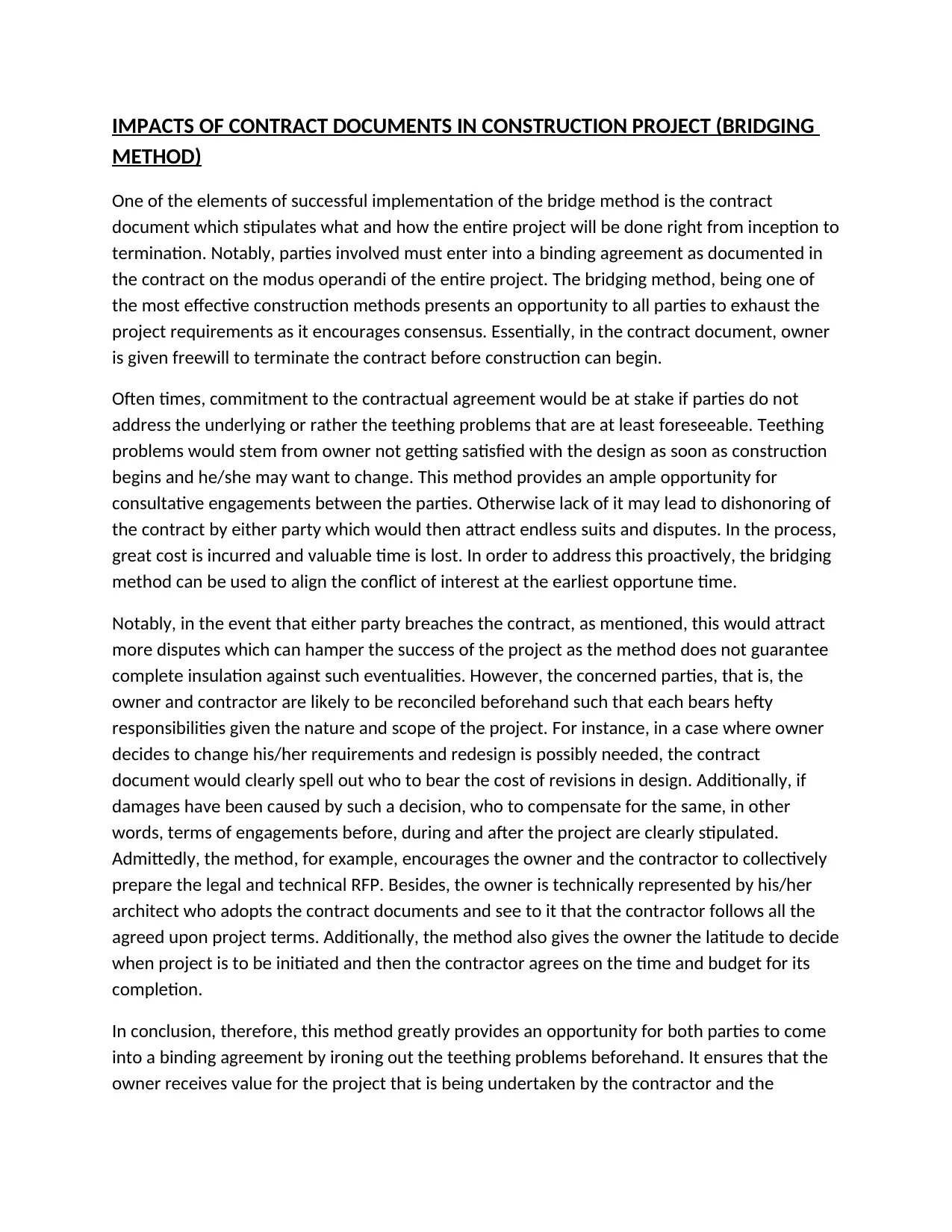Analysis of Contract Documents in Construction: Bridging Method
VerifiedAdded on 2020/05/28
|2
|564
|270
Report
AI Summary
This report analyzes the impact of contract documents in construction projects, specifically focusing on the bridging method. The bridging method, which emphasizes a binding agreement between the owner and contractor, is examined to understand how it addresses potential issues from project inception to completion. The report highlights the importance of clear terms, particularly in handling design changes and cost allocations, and how it promotes collaborative problem-solving, thereby minimizing disputes and ensuring project success. It underscores the role of the architect as the owner's representative in ensuring adherence to the contract terms, and the flexibility the method provides in defining project timelines and budgets. The report concludes that the bridging method facilitates a mutually beneficial agreement, ensuring value for the owner and opportunities for the contractor to deliver high-quality services, preventing low bids and change orders.
1 out of 2



![[object Object]](/_next/static/media/star-bottom.7253800d.svg)